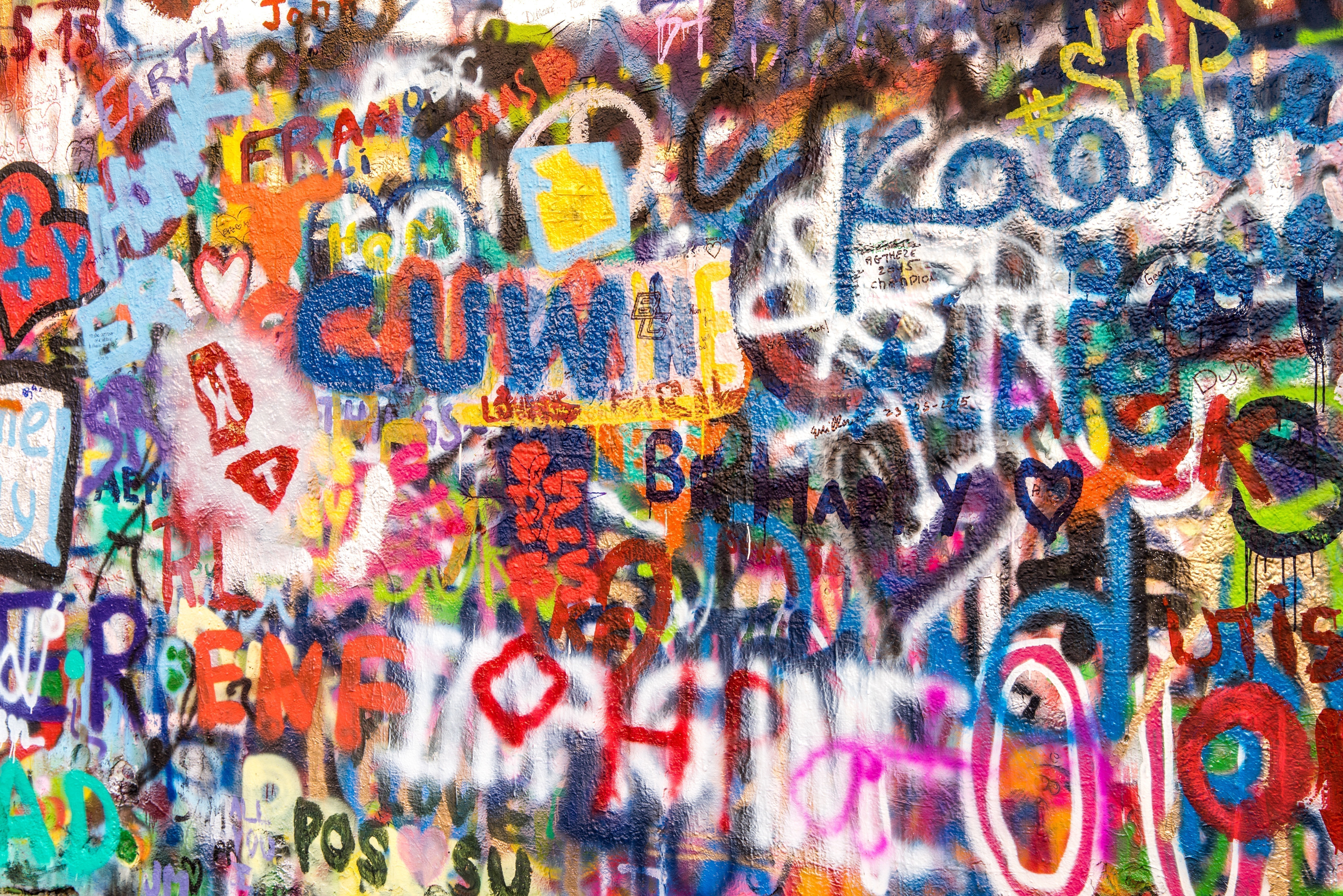

The old brick walls, the steel meshes and back alleys make up much of the background that played center stage to some of the greatest graffiti works. One of the charms of graffiti on the street is the backdrop that brings the colors and the style alive. Here are some stylish interiors that have opened their doors to graffiti – Brick and Steel Indoors! Creative, captivating and always popular, graffiti has the power to add innovative appeal to your home. And creative artists are finding ways to integrate graffiti into traditional homes as well without actually disturbing the existing vibe of the residence. Graffiti gives your home an edgy, street-savvy feel while doubling as beautiful artwork. Whether you like simple stencil-style creations or more elaborate and bright hip hop-inspired motifs, graffiti make a style statement that is both exclusive and catchy! Fabulous and colorful graffiti wall for the eclectic living room

The question of whether such work is an innovative art form or a public nuisance has aroused much debate.Looking to add color, style and an unexpected dose of excitement to your home? Then maybe it is time to give your walls the graffiti they deserve! Graffiti has come a long way from its street origins in the last few decades, and today homeowners and designers are more than happy to borrow from this unique and vivacious art form in order to infuse some life into modern interiors. For example, the graffiti in many Hispanic neighbourhoods in the United States is quite elaborate and is regarded by many as a form of urban art. Like the murals of these artists, great works of graffiti can beautify a neighbourhood and speak to the interests of a specific community. Works Progress Administration Federal Art Project during the Great Depression and the work of Diego Rivera in Mexico. To some observers graffiti is a form of public art, continuing the tradition, for example, of the murals commissioned by the U.S. In order to attract the most attention possible, this type of graffiti usually appeared in strategically or centrally located neighbourhoods.
#Graffiti wall art series#
In the 1990s there emerged a new form of graffiti, known as “ tagging,” which entailed the repeated use of a single symbol or series of symbols to mark territory. Graffiti was particularly prominent in major urban centres throughout the world, especially in the United States and Europe common targets were subways, billboards, and walls. During the 20th century, graffiti in the United States and Europe was closely associated with gangs, who used it for a variety of purposes: for identifying or claiming territory, for memorializing dead gang members in an informal “obituary,” for boasting about acts (e.g., crimes) committed by gang members, and for challenging rival gangs as a prelude to violent confrontations. For example, markings have been found in ancient Roman ruins, in the remains of the Mayan city of Tikal in Central America, on rocks in Spain dating to the 16th century, and in medieval English churches.
#Graffiti wall art how to#



 0 kommentar(er)
0 kommentar(er)
